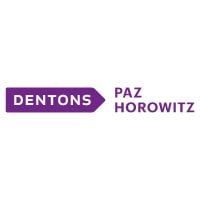

Legal director | Teojama



Juan Esteban Dousdebes
Legal director | Teojama
Team size: 12 People
What are the projects that you are most proud of working on over the past 12 months?
In today’s dynamic business environment, companies require robust financial structures and legal frameworks to facilitate large-scale financing while mitigating risks associated with overdue debt. Our projects focus on addressing key legal and financial issues that influence corporate financing decisions and the development of practical debt collection solutions. These initiatives are designed to support businesses in securing the necessary funding for expansion while implementing strategies to reduce the impact of delinquent accounts.
Facilitating large-scale company financing:
One of the primary objectives of our projects is to enhance access to large-scale financing by helping companies navigate complex legal and financial landscapes. These projects involve structuring financing arrangements such as bank loans, corporate special financial documents, equity investments, and asset-backed securities. As part of the group of the legal experts and financial analysts that conquer the authorisation from the regulatory government corps, we ensure that companies can secure funding while remaining compliant with national and international financial regulations.
A crucial aspect of this process is legal due diligence, where we assess contractual obligations, potential liabilities, and regulatory risks. This helps businesses mitigate legal pitfalls that could hinder financing efforts. Additionally, we collaborate in the design of financial models that align with a company’s growth objectives, ensuring they can manage debt and equity financing effectively.
Furthermore, we work on optimising capital structures by advising on debt-to-equity ratios, leveraging tax incentives, and ensuring that funding sources align with the company’s long-term sustainability. By collaborating with financial institutions and investors, our projects facilitate smooth negotiations and structuring of deals that benefit all parties involved.
Practical debt collection solutions:
Overdue debt poses a significant challenge to businesses, affecting cash flow and operational stability. Our projects incorporate legal and financial mechanisms that enable companies to manage and recover outstanding debts efficiently while maintaining positive relationships with clients.
We develop practical collection strategies tailored to the industry and client profile, including automated debit systems, early intervention protocols, and negotiation frameworks that encourage timely payments. Our approach includes risk assessment models that help businesses identify high-risk accounts and implement preventive measures before debts become problematic.
From a legal perspective, we ensure that debt collection practices comply with consumer protection laws, fair debt collection regulations, and contractual obligations. Our solutions involve drafting clear and enforceable credit agreements, setting up collateral-backed lending structures, and leveraging arbitration or mediation services to resolve disputes efficiently.
Additionally, we integrate technology-driven solutions such as AI-powered analytics, automated reminders, and digital payment solutions that streamline collection efforts. These innovations enhance transparency and efficiency in tracking outstanding debts, reducing the administrative burden on companies while improving recovery rates.
How do you approach managing legal aspects during periods of instability or crisis to ensure the organisation’s resilience?
During periods of instability or crisis, organisations must find innovative ways to resolve conflicts, protect stakeholder interests, and maintain operational continuity. Mediation tools, when used creatively within the legal and contractual framework, provide a flexible and efficient mechanism for dispute resolution. By thinking beyond traditional methods and integrating innovative approaches, organisations can strengthen their resilience while ensuring compliance with the law.
Adapting mediation to crisis situations:
Crisis situations often create unexpected legal and financial disputes, making it essential for organisations to use mediation tools dynamically. Instead of relying solely on conventional mediation processes, companies can adopt tailored approaches such as virtual mediation platforms, multi-stakeholder dialogue sessions, and hybrid dispute resolution models that combine mediation with direct negotiation.
For instance, during financial distress, organisations can proactively engage creditors, suppliers, and investors in mediated discussions to restructure obligations and avoid litigation. By facilitating open and compensation tools, companies can secure sustainable agreements that preserve business relationships and ensure long-term stability.
Leveraging legal and contractual frameworks:
To ensure compliance while being innovative, organisations must integrate mediation into their contractual and legal structures. Many commercial contracts already include mediation clauses, but businesses can enhance these by incorporating adaptive dispute resolution mechanisms. This means setting up contractual provisions that allow for expedited mediation in emergencies, industry-specific mediators, or the use of specialised mediation panels.
Additionally, organisations can creatively leverage regulatory frameworks that promote alternative dispute resolution (ADR) using, during economic crises, mediation-friendly policies to resolve financial disputes and labor conflicts. By aligning their mediation strategies with these regulations, organisations can navigate crises with minimal legal risks while benefiting from legal protections.
Creative mediation techniques for resilience:
Beyond legal compliance, creativity in mediation comes from using innovative techniques to foster constructive dialogue and problem-solving. Some effective approaches include:
Interest-based mediation: Instead of focusing solely on legal positions, mediators can encourage parties to explore underlying interests. For example, in a contractual dispute, a supplier facing financial difficulties might accept alternative payment terms rather than terminating the agreement.
Multi-party and cross-sector mediation: Engaging multiple stakeholders, such as regulators, employees, and financial institutions, in a structured mediation process can lead to holistic solutions. This approach is particularly useful during industry-wide crises, such as supply chain disruptions or regulatory changes.
Technology-driven mediation: Digital mediation platforms, AI-assisted dispute analysis, and blockchain-based agreement tracking can enhance transparency and efficiency in resolving conflicts. Virtual mediation allows businesses to resolve disputes quickly without geographical barriers.
Preventive mediation strategies: Companies can create mediation-based crisis management committees that proactively address disputes before they escalate. This ensures that potential conflicts — such as labour strikes, financial disputes, or regulatory challenges — are mediated early, reducing long-term risks.
What strategies do you employ to ensure the successful digital transformation of a legal department while maintaining compliance with your country’s data protection laws?
I played a key role in the creation and implementation of an Information Security Committee, an initiative led by technology members. This committee brings together key stakeholders, including experts who identify the most effective and cost-efficient hardware and software solutions, human resources professionals who facilitate critical training, and legal specialists who develop the legal and contractual frameworks necessary for enforcement. Additionally, senior management provides unwavering support, ensuring the committee’s success and alignment with organisational goals.
What do you think are the most important attributes for a modern in-house counsel to possess?
A modern in-house lawyer must go beyond legal expertise and develop a deep understanding of the business, its products and services, client needs, and market dynamics. By aligning legal strategies with business goals, they can proactively manage risks and support growth. Comprehensive knowledge of products and services enables them to craft precise contracts and ensure regulatory compliance. Understanding client expectations fosters stronger relationships and enhances decision-making. Additionally, being informed about market trends and legal developments allows them to anticipate challenges and seize opportunities. These attributes make an in-house lawyer a vital strategic partner in the organisation’s success.
Based on your experiences in the past year, are there any trends in the legal or business world that you are keeping an eye on that you think other in-house lawyers should be mindful of?
In-house lawyers must understand AI due to its vast potential in revolutionising contract development and legal products. AI can streamline contract drafting, enhance accuracy, and ensure compliance with evolving regulations. Additionally, it can automate routine tasks, allowing lawyers to focus on more complex legal issues. By leveraging AI, in-house legal teams can improve efficiency, reduce costs, and provide more strategic value to their organisations. Staying informed about AI advancements is crucial for legal professionals to remain competitive and innovative in the rapidly evolving legal landscape.